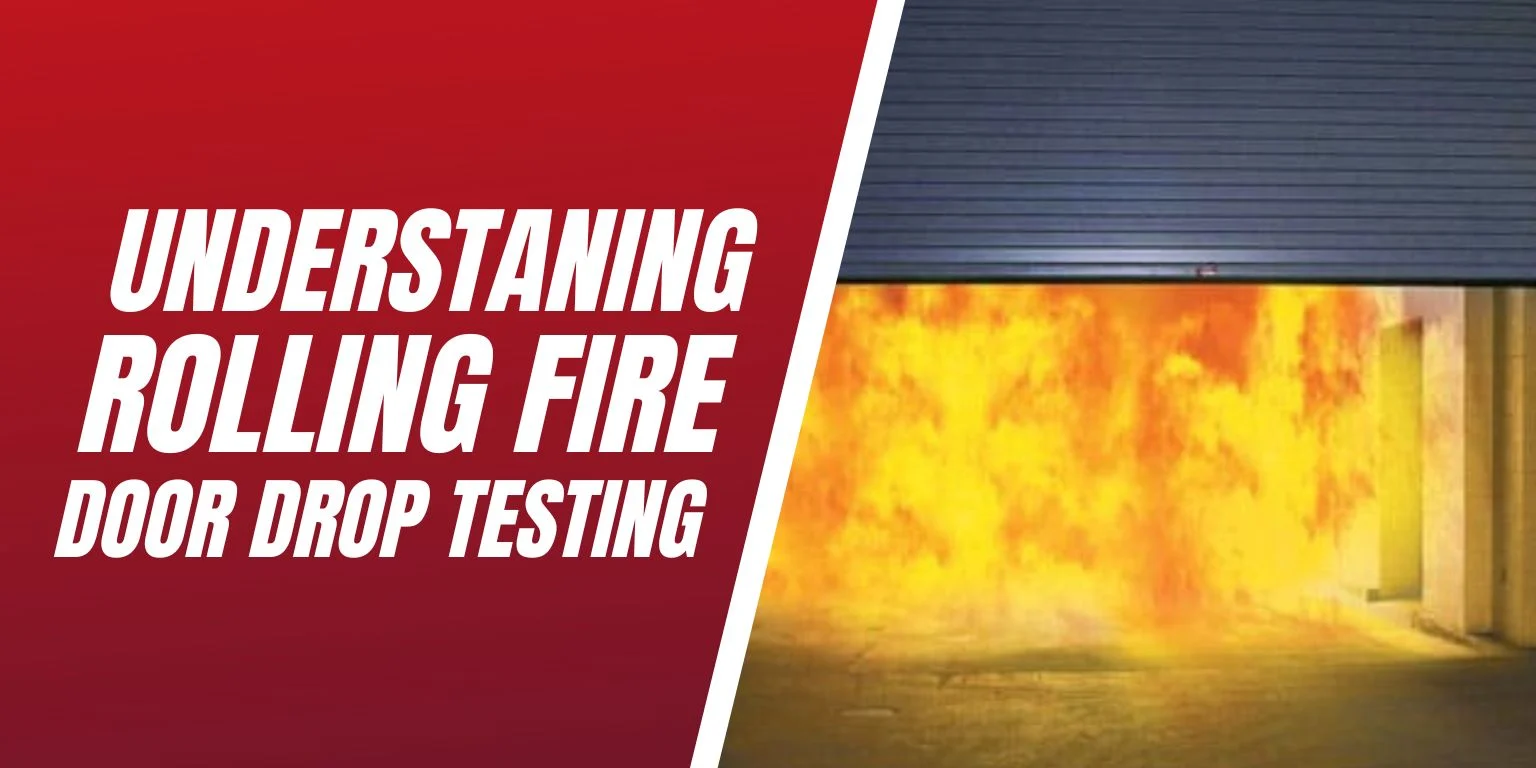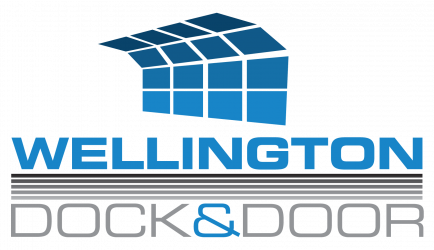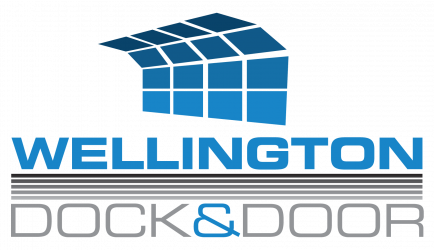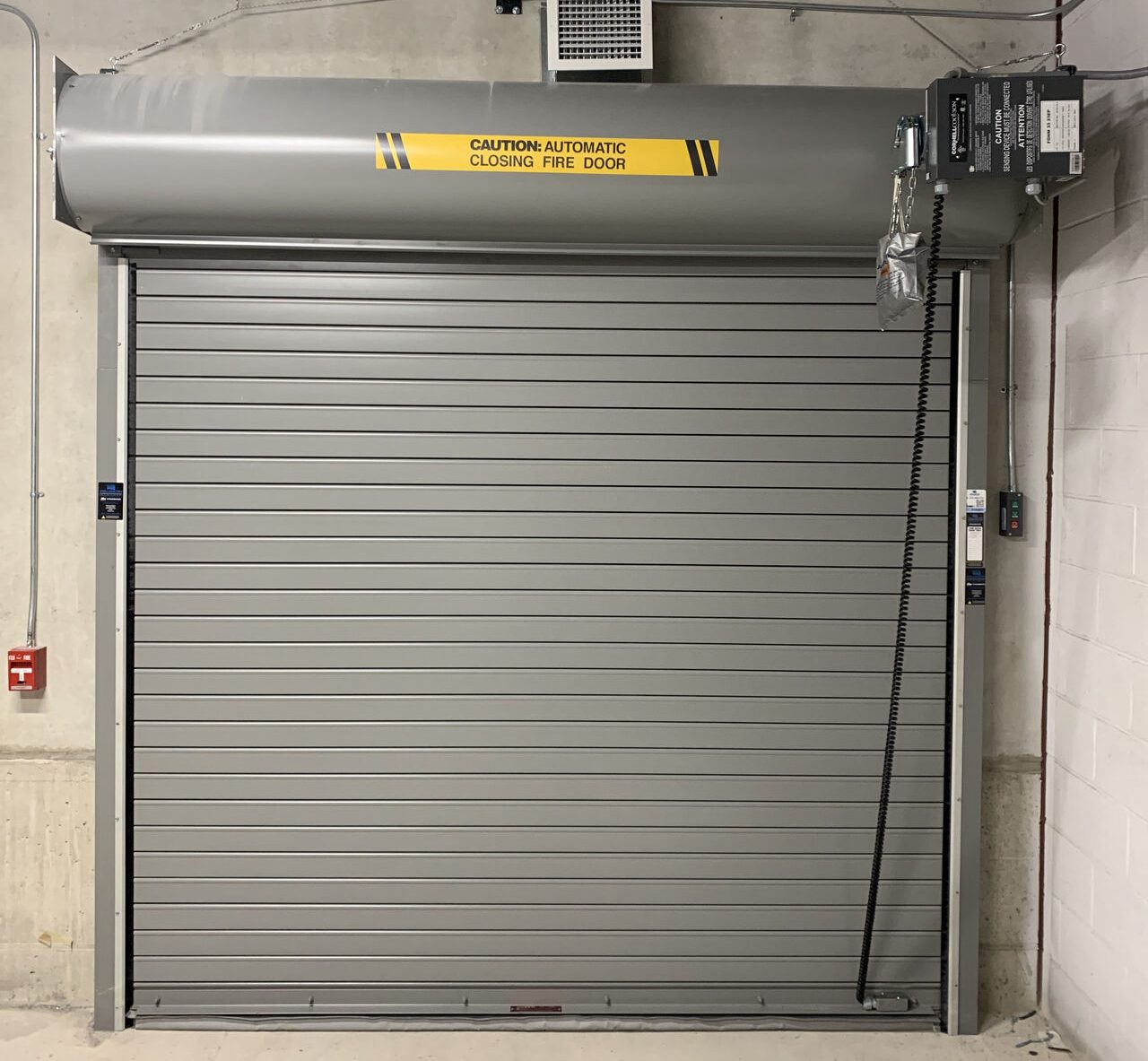An annual fire door testing and inspection is required by Canadian law. To help ensure your facility is prepared in case of a fire emergency, protect your personnel and your building with a comprehensive Wellington Dock & Door fire door test and inspection.
Recent changes to the NFPA 80 and IFC (International Fire Code) require a "Qualified Person" to perform fire door drop testing. The new changes define who a "Qualified Person" is. Here is what you need to know about the recent changes.
- • A clearer definition of who a “qualified person” is regarding periodic (annual) inspections and drop testing – NFPA 80 will now include language that reads “periodic inspections and testing shall be performed by a trained rolling steel fire door systems technician.”– Effective January 2022.
- • This technician is defined as someone “employed in the rolling steel fire door industry with documented training by a recognized industry organization or by a manufacturer of a listed rolling steel fire door.”– Effective January 2022.
- • New International Fire Code verbiage: “Rolling steel fire doors shall be inspected and tested annually by a trained rolling steel fire door systems technician in accordance with the applicable provisions of NFPA 80. Records of inspections and testing shall be maintained.”– This will be published in the 2024 edition of IFC, available in fall 2023.
- • Although NFPA 80 is a standard that isn’t necessarily enforceable, IFC actually is enforceable code, and building officials are obligated to enforce the code as written.
Our technicians are all certified on Periodic Inspection and Testing, meeting the requirements of NFPA 80, 2022 and IFC, 2024. Make sure the company you hire meets these requirements. Training records are available to our customers at their request. We will test your fire doors to the proper codes and provide you all the proper documentation as required.
* Source: NFPA 80, Fire Doors and Other Opening Protective, Copyright © 2007, National Fire Protection Association.
One of the most important tasks for a building owner to adhere to is ensuring that your fire doors are up to code, which includes overhead and rolling doors. Overhead and rolling fire doors are an integral part of your building’s overall fire protection system. These doors are a key component to the compartmentalization of a building to stop the spread of fire, smoke and other deadly toxic fumes. Rolling fire doors must be inspected and tested thoroughly, otherwise the facility as well as everyone inside is at risk.

What is a fire door drop test?
Fire door drop tests occur in two distinct steps.
Step One: Technicians will simulate the conditions necessary to trigger the fire door to operate. This involves the fire door shutting properly and ensuring the door doesn’t suffer any damage.
Step Two: Once the functionality of the rolling fire door is confirmed, technicians will then proceed to examine the doors return to its default state. This will be examined to ensure there are not any malfunctioning components to the rolling fire door that could hinder it from performing in the event of a fire emergency.
How Are Drop Tests Performed?
1 - The first thing is to check that the door’s installation is correct.
2 - Next, technicians will check to make sure that the fire rated label for your fire door is attached. Without this identification, your door will not get proper recognition as a fire door and fail the test.
3 - Then a technician will ensure all the mechanical components of the door operate as intended.
4 - Technicians will inspect the fusible link(s) and cable system and remove all grease or blockages to keep your door rolling properly.
5 - Next, technicians will check the guide assembly and curtain make sure no bolts have detached and all slats are not dented or bent that could cause the door to jamb.
6 - Once that’s done, technicians will perform the first of 2 drop tests to ensure the door falls at the correct speed and stops fully on the floor. The door will be reset and technicians will perform a 2nd drop test to ensure all components are able to be reset correctly and verify the falling speed of the door a second time.
If you have not yet arranged a rolling fire door drop test for your business, now is the perfect time. Whether you have a commercial facility, hotel or motel, healthcare institution, educational campus or industrial facility fire doors should be properly tested and inspected. In fact, a fire door Inspection and drop test is required to ensure that your fire doors will close automatically in the case of a fire emergency.


